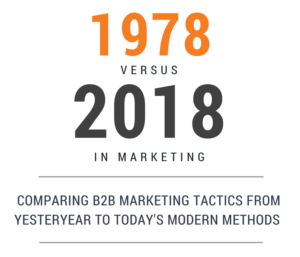Radio advertising is expected to remain relatively flat through 2020. Nowadays, this space always seems to be dominated by car dealerships, law firms, and pizza shop commercials in a highly B2C targeted message.
Streaming advertising is literally fueling music revenue – a clear illustration that there is a strong audience. It’s also hyper-targeted and forces businesses to really hone in on who their ideal customer is – down to music/podcast/video preferences. It requires tweaking, but once you get it, you’re golden.
Coupons vs. Digital Offers
The Sunday morning ritual of coupon-clipping hit an all-time low in 2016. Gone are the heady days of coupon redemption in the recessionary 90s that drove a mild resurgence of coupons redeemed. 307 billion print coupons were distributed in 2016 and only 2.2 billion were redeemed.
Last year, load-to-card digital coupons were redeemed at a rate of 6.2%, an all-time high as digital’s popularity continues to rise.
Brochures vs. Online Videos
Nielsen studies on video consumption depict a compelling story. Not only are we choosing to watch time-shifted content more so that ever (think DVR), but we have access to more devices than ever before, with 7.5 devices in the average household today. So, we have choices of when to watch things, what to watch, and on a plentiful choice of devices.
While brochures offer some value in their ability to be left behind and read more widely, online videos’ ability to showcase intricate processes and product features concisely make them an obvious choice for B2B marketers.
Cold Calling vs. Social Selling
With only 2% of cold-calls leading to a meeting and less than 1% ever leading to a sale, it’s no surprise that ‘Cold Calling’ has the bad rap these days. Cold-calling is both time consuming, frustrating for sales reps and costly, over 60% more costly than inbound marketing.
Social Selling gives a salesperson an ability to both connect and showcase content and expertise without an invasive selling approach so that customers can engage with a business on their own terms (and when they’re most likely to convert).
Guesswork vs. Deep Analytics
Before big data and analytics, we applied a lot of guesswork and “gut instinct’ to business decisions. Access to big data and analytics is not a new concept. Enterprise businesses have been using data for decision making for decades. Automation has brought it to the masses and even a simple, free program like Google Analytics can make a world of difference when making sound business decisions.
Understanding how people find you, what they’re interested in, how they are engaging and initially converting, provide great insight before making that first call to a prospect.
To be effective, the numbers need to have value and often that means interpretation for executives. The analytics available now make it simpler than ever to pull out the key drivers to help them grab the true value in 30 seconds or less.
DVRs or Disco Balls
Digital is here and it’s not going away. The fact is, digital is an inevitable, inescapable business shift. If you’re holding on to the old-school ways and avoiding change, you might as well be using a crystal ball to forecast your business’ future.
As the business landscape continues to evolve, the customer is demanding virtual access to your brand’s products and services. So you should likewise value digital technologies as a way to extend and individualize your services far beyond the brick and mortar store.
Video truly did kill the radio star. You may be old enough to remember, but you’re not too old to do something about it!
A lot has changed for marketers in the last 40 years. Click the image below to see which mediums come out on top.

